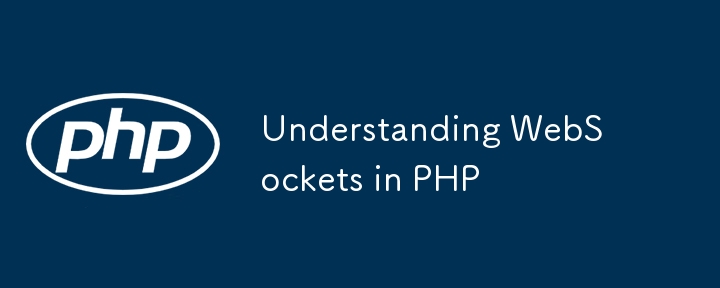

WebSockets provide a real-time, full-duplex communication channel over a single TCP connection. Unlike HTTP, where the client sends requests to the server and waits for a response, WebSockets allow for continuous communication between the client and the server without the need for multiple requests. This is ideal for applications that require real-time updates, such as chat applications, live notifications, and online games.
In this guide, we’ll explore WebSockets, how they work, and how to implement them in PHP.
WebSockets enable interactive communication between a web browser (or any other client) and a server. Here are the key aspects of WebSockets:
To implement WebSockets in PHP, you can use a library such as Ratchet, a PHP library specifically designed for real-time, bidirectional communication using WebSockets.
First, you need to install the Ratchet library. Assuming you have Composer installed, you can run the following command:
composer require cboden/ratchet
Let’s create a simple WebSocket server that will handle connections and messages.
<?php
use Ratchet\MessageComponentInterface;
use Ratchet\ConnectionInterface;
class WebSocketServer implements MessageComponentInterface {
protected $clients;
public function __construct() {
$this->clients = new \SplObjectStorage;
}
// Called when a new client connects
public function onOpen(ConnectionInterface $conn) {
$this->clients->attach($conn);
echo "New connection: ({$conn->resourceId})\n";
}
// Called when a client sends a message
public function onMessage(ConnectionInterface $from, $msg) {
echo "New message: $msg\n";
foreach ($this->clients as $client) {
if ($from !== $client) {
// Send the message to everyone except the sender
$client->send($msg);
}
}
}
// Called when a connection is closed
public function onClose(ConnectionInterface $conn) {
$this->clients->detach($conn);
echo "Connection closed: ({$conn->resourceId})\n";
}
// Called if an error occurs
public function onError(ConnectionInterface $conn, \Exception $e) {
echo "Error: {$e->getMessage()}\n";
$conn->close();
}
}
This class implements Ratchet's MessageComponentInterface, which defines methods for handling new connections, incoming messages, closed connections, and errors.
Create a new PHP script to start the WebSocket server, for example, start_server.php.
<?php
require __DIR__ . '/vendor/autoload.php';
use Ratchet\Http\HttpServer;
use Ratchet\Server\IoServer;
use Ratchet\WebSocket\WsServer;
$server = IoServer::factory(
new HttpServer(
new WsServer(
new WebSocketServer()
)
),
8080 // Port number for the WebSocket server
);
$server->run();
You can start the server by running this script:
php start_server.php
The server will now be running on ws://localhost:8080.
Now, let’s create an HTML file with jQuery and JavaScript to connect to the WebSocket server.
<!DOCTYPE html>
<html lang="en">
<head>
<meta charset="UTF-8">
<meta name="viewport" content="width=device-width, initial-scale=1.0">
<title>WebSocket Chat</title>
<script src="https://code.jquery.com/jquery-3.6.0.min.js"></script>
</head>
<body>
<h2>WebSocket Chat</h2>
<input type="text" id="message" placeholder="Enter your message">
<button id="send">Send</button>
<div id="chat"></div>
<script>
$(document).ready(function() {
var ws = new WebSocket('ws://localhost:8080');
// When receiving a message from the server
ws.onmessage = function(event) {
$('#chat').append('<p>' + event.data + '</p>');
};
// Sending a message to the server
$('#send').click(function() {
var msg = $('#message').val();
ws.send(msg);
$('#message').val('');
});
});
</script>
</body>
</html>
This simple interface allows you to input a message and send it to the WebSocket server. All connected clients will receive the message and display it.
When you send a message from one client, it will appear in all connected clients' browsers.
WebSocket は、クライアントとサーバー間のリアルタイムの全二重通信のための強力なソリューションを提供し、チャット システム、ライブ通知、その他のリアルタイム アプリケーションに最適です。 PHP と Ratchet などのライブラリを使用すると、WebSocket サーバーを簡単にセットアップし、それをアプリケーションに統合して、ユーザー エンゲージメントと応答性を向上させることができます。
The above is the detailed content of Understanding WebSockets in PHP. For more information, please follow other related articles on the PHP Chinese website!




